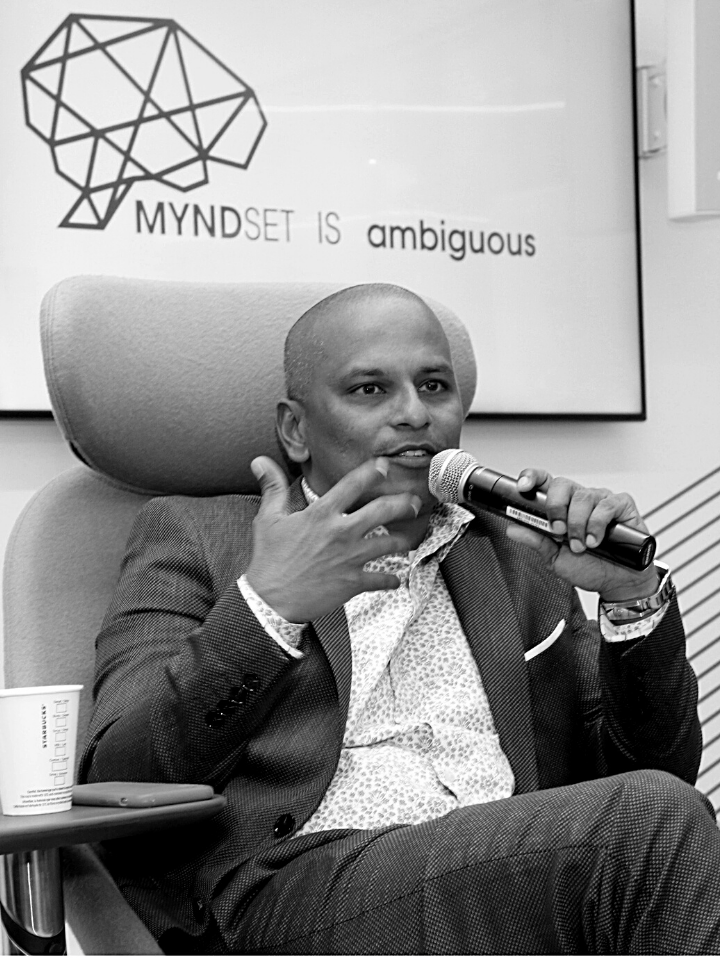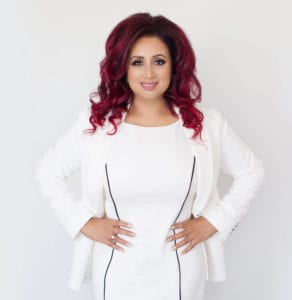Raj Girn: OK. Folks, thanks for tuning in to another great two-part series of `The Transform Your Confidence Show`. I’m your host and the founder of TheOpenChestConfidenceAcademy.com. This week’s theme is Branding and Marketing. And I’ll be focusing more on the marketing over the next couple of months because I’ve done a whole lot of trainings on branding, as you guys already know. In fact, I also launched a Branding Masterclass so you can just go to the website at TheOpenChestConfidenceAcademy.com to go grab that.
My goal with this week’s two-part series is to provide you with actionable tips on marketing strategy in a series entitled “Tips on Marketing to Scale Your Business The Right Way” to help me do this. My guest is serial tech entrepreneur Sathish Bala, the founder of Schoolio, an online homeschooling education platform. Sathish has 25+ years in tech, even though he looks like a schoolboy having built B2B and B2C startups throughout his professional career. He, in fact, has founded three companies to successful exits and has sold a staggering over 50 million dollars worth of products and services in his time. So I think he knows a thing or two about scaling companies to succeed.
Here is Part One of our conversation:

Raj Girn: Please welcome to the show my longtime friend, Sathish Bala.
Sathish Bala: Yeah, what an intro. Intro me goose bumps. And like this rush of history comes colliding into my present mode. I appreciate that. Thank you.
Absolutely. Sweetheart, thanks so much for agreeing to be on this show. I’ve been looking forward to deep diving this particular topic with you because your entire career has been built on innovative marketing. So, you know, your take on marketing strategy for a business is extremely valuable for everyone watching, listening and reading. So if you have this on in the background, it needs to be in the forefront. Switch everything off, guys, because we’re going to be deep diving some really, really great, awesome, invaluable experiential advice from my friend Sathish. So if you’re ready, I’m just going to jump right in.
So just to give you guys some context, I just want to give you a definition on what marketing is, especially for those of you who haven’t really dabbled much in marketing, just so that you can kind of realize why, without marketing, you really don’t have a business. So according to the American Marketing Association, marketing is the process of creating, communicating, delivering and exchanging offerings that have value for customers, clients, partners and the society at large. Sathish based on the above being the objective of marketing. What in your experience, having founded three successful exits, have you seen to be the common denominator criteria of a good marketing strategy? And if I know you, this is going to be an hour for you to give me that answer because you’ve done so much but to me and give it to me in a nutshell, as you possibly can for people.

Yeah, no, it’s it’s a it’s a great question. It’s an amazing story. First of all, thank you for having me. It’s one of my favourite topics. Like you, I spent a lot of time, but, you know, first time founders who confuse the terminology. Right. The world is full of terminology, memes, and every TikTok, you know, person is giving out advice. And, you know, this is there’s a dance like business is a beautiful dance. And when you get into the right floor and you find the beat that is yours and your tribe, it’s a beautiful thing. And so many of us struggle because we don’t understand what is it that we’re looking for? For me, you know, the idea of marketing is this little voice. We all have this little voice in our head, right, that tells us we want things or we need things. And the difference between want and need is based on what this noise is saying in your head. And marketing at its essence is the help be part of your voice. You make that little voice says, oh, I need a sugar head. Why am I thinking KitKat and not Snickers. You know, I want a bag. Why am I thinking a Louis versus Gucci versus Walmart? This little voice is constantly telling us what we think we want and what we think we need.
And so for me, when I look at marketing in all of my businesses, regardless of the size of the revenue, it’s what is my most compelling story. Like what what am I trying to get into the world, not what I’m trying to sell yet, but what’s the compelling story around like what is this thing I want to bring into the universe of other schools? They see first, my agency. I mean, I had a bow-tie business for a year, like making handmade bow ties. Some of the best I have the best collection. But you actually get the story right and we spend less time on that as we work in this speed to market mindset where you go right to the features and you go right to discounts. You go right into like, you know, couponing stuff versus what is my compelling story for whatever this thing that I’m building. And then when you write the right compelling story, which is your marketing message, then you get to think about, well, people that are anonymous to me, I need to know them. So the right compelling story will turn you anonymous, you know, eyeballs into known eyeballs. And then if those two things happen, then you have this third thing that marketing does really well, which is to understand the reason to purchase. Is it a need? Is that a want? Does it flip flop? Is it stuck? And so the whole point of like marketing to me is to consistently stay in those three little pillars and look at how they continuously connected.
“The right compelling story will turn you anonymous eyeballs into known eyeballs. And then if those two things happen, then you have this third thing that marketing does really well, which is to understand the reason to purchase.” ~Sathish Bala
I love everything about what you just said, and, you know, it’s a great kind of way for us to lead into some of the things that we’re going to really minutia deep dive into. But before I get there Sathish, I want to ask you this question, which I generally don’t ask this early on, but I kind of feel that we need to. And that is where have you seen companies get this wrong? Like, do you have an example or something that you’ve seen that’s happened that gets what you just said there in the three criteria that you feel makes for good marketing, that, you know, this company or these people get it wrong?
Yeah, and I was thinking about that. And, you know, there’s there’s so many options to choose from. But but the one that I resonate with is H&M. I love that brand because my kids are young is the best place to go get some quick stuff that they’re going to grow out of anyways. Right. And so so H&M did this thing called the coolest monkey in the jungle. I don’t know if you remember, it is a 2018 and their story was compelling. You know, it’s fall season coming up. These are great colours, hoodies, etc., but what they forgot to really pay attention to is who’s listening to their story and the creative that went out on the website was a cute little black little boy with a hoodie on said ‘coolest monkey in the jungle’. Oh, right now there’s an art director along the way who took the picture. There is a team of brand managers that approved it. There’s a bunch of folks that put it on a website along the entire brand and marketing journey. They didn’t connect the dots because they weren’t paying attention to their story. And that’s a big brand making very small mistakes to a point where I think the weekend actually tweeted saying I’m no longer going to be working with them. And so that simple example of a big brand that makes a mistake that you can make as a as a small startup. And the consequences are not just the loss of sale, but a loss of trust. And that’s the fourth thing, if I can reverse back to the previous thing, is you’re doing all this stuff by creating a story and moving the trust from anonymous to known and then giving them a reason to purchase you all because you want that trust. And that’s really what every business at its core is looking for. What is my marketing message? It’s going to create the most amount of trust with the largest pool of people for the longest amount of time.
“You’re doing all this stuff by creating a story and moving the trust from anonymous to known and then giving them a reason to purchase you all because you want that trust” ~Sathish Bala
And, you know, and brand loyalty creates a brand equity where, you know, you can sell a ten dollar purse for two thousand dollars. Right. So it’s interesting that you said that. The key here is that I was I’m so astonished by is that nobody saw the obvious. No one saw the elephant in that room with that kind of thing. It’s shocking.
Yeah, exactly mean. We’ve seen brands do this over and over in the fashion industry. Yes. You know, we’ve seen this in every brand and truthfully. So every business is going to make a mistake. Right. And I think when you have the right marketing message with authenticity, with the right type of people, you get to go one time.
Absolutely right. And I think that, you know, what you said, though, is really important for people to actually understand the power of what you just said there. And I want to kind of preface it in my understanding. I think that this is why when you build out certain aspects of your infrastructure that you have to do the work. You have to figure out what is the vision of this company, what is the mission of this company that’s going to take me to that vision, that nirvana, the journey that we’re taking someone on. Right. How are we going to get them there? What are the brand values that we need to make sure that we stay within so that every single piece of marketing message, product service, training that we do both internally and the marketing messages that we send out there in the world, stay within that framework like there’s some control that.

And that’s kind of really where the foundations of marketing also pivotal is that you have to do that groundwork before you go to market, which is, I feel, the big missing link with a lot of kind of the smaller companies, Sathish that, you know, I’m a creator. I’m just going to put it out there and they don’t think about what they’re doing. And all of a sudden they wonder why they get canceled because they aren’t doing the due diligence that’s necessary to build out the brand. Everyone is paying attention to everyone today because we all have access to the same stuff. Give me your comment on that.
I think you hit it out of the park on that one. And I think sometimes when I’m talking to people, you know, I try to I try to dumb it down for them, like, you know, by the by the time you’re old enough to leave the house and we’re talking for you, we’re all going to JK for the first time. You are already marketing yourself, from from where you stand in line to who’s your friend in JK to where you sit for lunch, everything you’re doing, you’re marketing, a version of yourself, at a very early age. And we continue this in our personal lives subconsciously. Right. And so when you think about starting a business, I always say, look, the business is always an extension of you and you already are a business, whether you like it or not.
“The business is always an extension of you and you already are a business, whether you like it or not.” ~Sathish Bala
That was Jay-Z said, right?
Right. And so if you’re looking for a simplified way to go, what is marketing or marketing really is you going out there with some clarity on what am I trying to do, who’s my customer? Why should they trust me? And why do I why do I belong so many founders? And I might ask a simple question of like, why? Why do you want to start this business? Who cares about this? And they don’t have an answer because everybody starts with all the wrong metrics is and I want to be self-employed. I want to make a lot of money. I want to freedom over my time, you and you and I know after two decades of this stuff, those are all scorecards. Yes. Happened over time. You know, I didn’t set out to sell fifty million dollars in products and services. I just focused on how do I get out there and create a brand of trust and authenticity. So whatever I do in life, the people that know me will back me up. And today all you can go, Hey Raj, I’m starting a pen company. I could use some help. You’re going to be like, I’m going to help you and I’ll be thinking about my plans is because I’ve demonstrated value through my marketing.
Absolutely. Absolutely. And it’s interesting because it just you know, as you were talking there, I was thinking to myself, it reminds me of that famous quote by Jay-Z where he says, I hope I get this quote right. “I’m not a business. I’m not a businessman. I’m a business man.” Yeah. So and that’s what you just said, basically.
Beautiful line. And I think that it sort of summarizes very neatly the mindset you need to have. And, you know, there is no guarantee in life that any business you start will work, but is always a guarantee that you’re going to create a market perception about you or your product when it succeeds or if it doesn’t succeed.
“There is no guarantee in life that any business you start will work, but is always a guarantee that you’re going to create a market perception about you or your product when it succeeds or if it doesn’t succeed.” ~Sathish Bala
Absolutely, all of the above, everything that you just said there, so let’s call people a little bit southeast before we kind of move into more of the, you know, kind of, you know, perceptions and concepts. Let’s talk a little bit about the brass tacks. I want to slide in a bit of marketing schooling for, you know, for this next question with what you said, because everything in life, just like you said, in order to set up for success, needs some foundational knowledge to understand the purpose of a given concept. And in business, with marketing being the only department in an organization with the singular purpose of creating revenue as its end goal. I really feel that some marketing 101 is crucial to talk about here before we move forward with this.
So with that said, and to build upon the, you know, the definition that I kind of set things off with the American Marketing Association’s definition, I want to, you know, I want to just kind of set here that when you put together a marketing plan for those who don’t have one, I have never had one and don’t know what the importance is. There are the seven P’s to consider now as a marketing person, this is standard for someone like Sathish and for me. But this is something time and time again I find my clients that come to me with various problems. It always comes back to the fact that they don’t have these seven P’s dialed in. So what are they – Product, price, promotion, place, people, process and physical evidence. Sathish, you know, I’m hitting you up on this one. Can you share the high level on what each of these are and how they link together from your own experience? And perhaps an example from one of your companies to illustrate this or maybe a company that you feel.
I’m taking on the beast of organized cult called public education, you know, and we’re only a 10 month old company, but we already have 700+ customers and we broke six figures. And then what’s brilliant. So for me, the formula I’m about to talk to, to your members about is what I use as early as like 9 months ago. This is not something that, you know, you take lightly because every company, no matter how small or big, that you can’t predict the foundation has to be strong. So these 7Ps, you know, let’s let’s go down the list and then I’ll give this definition, then I’ll give you the schoolio version.

OK, at the starting point is product. At the end of the day, having immense amount of clarity around what is the product or service is really important, right. It can build so many businesses. You can build affiliate business, drop shop business. You could build your own unique product, the services. There’s unlimited amount of ways to solve a problem, but what problem solving is really clear and a lot of people start with the wrong solution. And so clarity around the product is really important. Price without the right validation. You have no idea what to ask for money. And people that are like, oh, I’m not a sales person, I’m really nervous about how to ask for money is because you don’t know what you’re worth when you have money around. What you’re worth is easy to go. This is what I’m worth, you know, and then the place. How do you target and how do you get them to buy your product where, you know, just because you can hit people everywhere doesn’t mean you have to hit people everywhere.
A strategy around converting people at the right time. And then people I look at as a two-part version. One is who are the customers that I want to go get and who are they and what do they look like and what do they live and how much do they make? And we get real detailed and like who am I hunting? But at the same time I look on the other side of who are all the people that I need to have to represent us? Who’s our first point of contact? Who’s a follow up? The email that we send to say, what does our website say? Because that’s all representation of a people or a person. The process of how do you deliver the product? Know if you’re sending a physical product out, right, from like the packaging that shows up. I mean, unboxing is a whole category now, a billion dollar category of just unboxing. So you can imagine the amount of thought you got to put into what is the process of delivering something and then the physical evidence, which I think is the last thing people remember correctly. It’s about demonstrating other people’s value to what you deliver, the testimonials, the feedback and etc.
And so, you know, these seven P’s also don’t follow a linear model, right? They can change and pivot based on what business you’re doing, but all seven are important. So when I look at school year, for example, the product we’re selling is in home education curriculum kit. And the reason we started to sell is when the pandemic happened. You cannot buy Canadian education. You get the public school system is set up as a series of expectations with full autonomy over how to teach it for a teacher. So now you have 40,000-50,000 teachers with 40,000-50,000 ways to teach something without any way for the parent to follow along, which is why it is really hard for parents to be educators at home. So we said, OK, if we can now figure out what our product is, which is education in a box, we know who we want to go after and they are homeschooling parents. There’s 10 million of us in North America, we know how are we going to get to them, because the place they hang out is Facebook and Instagram and Pinterest. Awesome!
So we’re not going to spend money on ads and all this other stuff because we know exactly where they hang out. We know what the process is of getting them the product because we need to deliver education. So we went down the path of being a digital product and the price took a ton of a B-testing, talking to parents going, I know this, how much money you have that you’re an one household income. The minute the mom decides to be a teacher in 99% of the homeschooling families, the mom takes the teacher role and sacrifices her career. So now we have a single income. So all of this led to what’s our price point per unit, per bundle or whatever. And then we focus a lot on the first six months of just owning this physical and digital evidence. So giving stuff away for free didn’t feel bad because we wanted the evidence like being a 24-hour shock, knowing our moms don’t get online and the kids go to bed at 11 p.m. means our people need to work from 11 to 2 because that’s when the moms are online. Being nine to five means nothing to them.
So my point is all of this data and insight was gathered around these principles and that allowed us to go to market on August 1st with a very good game plan. Lots of risk. But those risks were manageable because we did our 7th P and it wasn’t by accident that by month 9 were already 100k plus averaging 15 months. It wasn’t by accident. The seven, eight hundred parents are now not only part of us, but they’re also reselling our product. And there are other moms and we’re creating all these new cool things. But it wasn’t by accident, wasn’t it? Yes. And so these seven Ps are super important. Whether you starting schoolio, your restaurant blog clothing line doesn’t matter. You can tie it all back to those seven points, right?

Absolutely. What an incredible example. And I’m. I’m very excited about this next venture of yours, Sathish, because I feel that this one is probably the one that has the longest opportunity, because you’re always going to need to educate kids. And with the world and technology being what it is, I do see as having more, you know, wants and needs and desires to home school our children because we can. Right? I mean, I know this is a pandemic induced thought process for a lot of people, but when you speak to a lot of people, they actually kind of like the idea of being able to have, whether it is their primary source of education for their kids or if it is an adjunct to add to when they do go back to school. I think that this is something that’s definitely in the industry of education to stay and to grow. So it’s incredible that you came up with this.
No. And, you know, another great quote from Mike Tyson, you know, everybody’s got a plan until you get punched in the face for some didn’t have a plan and covid punched them in the face. And look, I’m I’m a part time home schooling dad. We love the public school system. I love education, but I don’t like the ecosystem of the school formula. That hasn’t changed in your time. My time. And so, you know, everything we do in schools look at OK, this by by grade three, the school is big curiosity and education, excitement out of the child. That’s our primary focus. How can we instill curiosity, interest you entertainment education for the child where they are excited about school and if they are excited about school, they’re naturally open to learning. If they’re naturally open to learning, then we can teach them how to learn anything. And in a world economy, global businesses are going to be the future.
You and I can’t predict what jobs our kids are going to get, but we can set them up today to learn how they learn anything they want to change the toilet seat. Here’s how your brain learns. If you want to be a business person tomorrow, an accountant, a painter, a designer. And I think that’s where we hope from a schoolio perspective we can create this blueprint. And the sooner we can give you the blueprint, you operate from a position of strength, not weakness, which is today’s school system. How fast can they get you to what you’re not good at and you spend the rest of your life trying to be better at it, you know? And so any going off topic a little bit. But the building of this business is the same methodology I used almost 15-years-ago for the first 20- years-ago for Bhuvan Digital. Right. And so so it’s very powerful, but it’s not easy money. And you’re going to do it for a long time and innovate and innovate. Iterate until you can clearly explain to a third party what I said when I take the shortcut and they take the first answer, as you know, and that’s where the whole thing comes tumbling down.
This is so powerful, Sathish, and it’s again, you know, this is stuff that is very foundational for people who have been in the marketing game for a long time and actually isn’t foundational for a lot of people that have been in the marketing game for a long time, because you can see that they don’t follow these things. Yeah, right. I mean, so let me add another layer to this. Let’s confuse people further, Sathish. My belief, my firm belief actually is based and is based on 30 years of being in some form of entrepreneurship, and it’s based on being on some sort of entrepreneurial place or other. Is that the most memorable marketing campaigns are the ones that marry methodology, which is what we’ve been talking about so far with creativity?
“Most memorable marketing campaigns are the ones that marry methodology, which is what we’ve been talking about so far with creativity” ~Raj Girn
I would love for you to share an example of marketing campaigns that you feel nailed this because I feel that you are a genius at this. You know, a lot of what you’ve created, a lot of what’s in your wheelhouse has equally married, you know, creativity and methodology. So I’m asking you I’m curious about what you feel, whether it’s a profit or a not for profit organization. What companies out there do you feel have nailed this idea of marrying these two to get the end result, which may not always be revenue, but let’s I’m going to leave it there and let you pick up.
Yeah. And again, you know, there’s so many stories out there of companies who get awards for this kind of stuff. I tend to look at like what is the simplest messaging? Right. And you have to work hard to convince me, you know, I don’t really get it. But there’s two that I remember vividly. One is in all those cute little smart cars. Yes, they these make them so small. And I remember being in a meeting with those guys. This is like four or five years ago. And like, how do we compete against the cool, sexy Porsche and the BMW and the whatever. And we’re like, you know, we can’t beat them on speed in the long distance race. But when you a stoplight in the in the city and it’s urban driving, we go zero to 60 faster than any other car. And that little insight created a whole series of amazing marketing messaging around. If you’re in the urban centres of anywhere in the world, more important than glamour and luxury is speed, you know, weaving through traffic and all the ads reinforce it. And it was such a cool campaign because you instantly got it. If you’re, if you’re downtown person, you can drive a beautiful Porsche and things like that with stop lights on every every block. Right. Example of taking one small insight in a very ugly looking car and turning it into a multi-billion dollar industry on that one insight.
And that’s how strong marketing can be, you know, a little closer to home base. That’s when we started it. Or like, OK, we’re not Bollywood, but we are, we are urban. So how do we represent us? So we created this really just fun messaging around get DC fired. And all it meant is any time somebody said no and you felt like the world is on you and you did it anyways, you got this and that little hashtag that we invented ten years ago, I see people use it in all sorts of everyday life, like like I graduated. I’m like, huh? You know, I got this new job that I never thought I would get. Boom, got this. And that little thing that we invented became a social reference, doing something impossible. But last one, which I love, Budweiser. I think I’m in my forties myself. But that old commercial, though, was how they didn’t do much. They brought it back. We did it for the quarantine version with the same characters, except they’re all in quarantine. And it was such a cool reminder of how powerful a simple message could be to quit. We all instantly got it. As soon as you hear that, then ends with “How is Quarantine”. I was going to be sick, you know. And so things like that, like, you know, when you have clarity and you have the seven P’s ironed out and you kind of know why you exist and why you matter, it’s really easy and fun to create amazing, impactful communication.
Absolutely.











